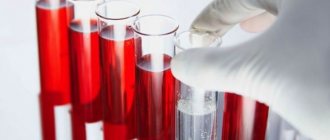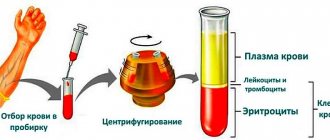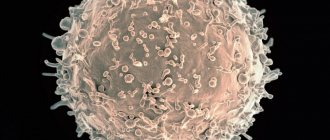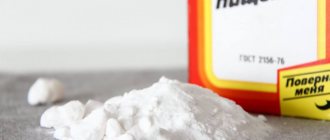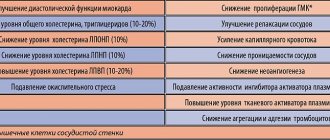A coprogram or stool analysis is an important study performed to identify diseases of the digestive system, for example, inflammatory bowel disease, stomach or colon cancer, anal fissures, hemorrhoids, and dysbiosis.
Stool analysis helps evaluate the functions of digestion and absorption in the intestine, and determine the presence of opportunistic pathogens - viruses, bacteria, parasites.
During normal functioning of the gastrointestinal tract, food passing through it is exposed to digestive enzymes and bile. As a result, proteins are broken down into amino acids, polysaccharides into monosaccharides, fats into glycerol and fatty acids, and nucleic acids into nucleotides. The resulting substances are then absorbed through the intestinal wall into the blood and lymph.
Undigested food remains enter the large intestine, where water is partially absorbed from them. Normally, stool entering the rectum consists of:
- from water by 70%;
- from dry food residues by 30%.
If there are disturbances in the gastrointestinal tract, disruptions in the processes of digestion and absorption of nutrients begin. This is reflected in the characteristics of feces.
When to do general stool tests?
The content of the article
General stool tests should be done by patients with:
- symptoms of gastrointestinal disorders: abdominal pain, change in stool frequency - diarrhea or constipation, change in the type of stool, nausea, vomiting, flatulence, increase in abdominal circumference, weight loss, weakness;
- irritable bowel syndrome;
- poor digestion, stomach ulcers;
- inflammatory bowel diseases;
- malabsorption of nutrients;
- diseases of the liver, pancreas
- cancer of the gastrointestinal tract or to exclude cancer;
- bleeding from the gastrointestinal tract of unknown origin;
- autoimmune diseases;
- allergies;
- nutritional deficiency.
Thus, stool testing is prescribed for the purpose of:
- diagnostics of diseases of the gastrointestinal tract - pathologies of the gallbladder and biliary tract, stomach, pancreas, liver, duodenum, small and large intestine;
- checks for suspected intestinal infections;
- to evaluate the treatment of gastrointestinal diseases;
- diagnosis of genetic pathologies, malignant neoplasms;
- establishing the indigestibility of certain products.
Indications for scatological examination
You should definitely contact your doctor for a stool test if you have any of the following symptoms:
- Abdominal pain - girdle pain, in the epigastrium, in the upper or lower abdomen, in the right or left hypochondrium. The nature and cyclicity of the pain do not matter - even mildly expressed discomfort in the liver, stomach, intestines or pancreas should prompt you to be examined, especially if they do not have an obvious cause and often recur;
- Belching, heartburn, nausea, vomiting, pathological taste in the mouth;
- Bloating, flatulence, diarrhea, constipation;
- Strange appearance, smell, color of stool, abnormal volume, presence of suspicious inclusions;
- Blood stains, pus, or mucus on underwear adjacent to the anus, as well as tenderness, itching, or a foreign body sensation in the rectum;
- The need to monitor the condition of the gastrointestinal tract during treatment, before diagnostic manipulation, surgery or for preventive purposes (preferably annually);
- Suspicion of poisoning, neoplasm, parasitic infestation;
- Allergies, intolerance to certain foods;
- A sharp, significant decrease in body weight for no apparent reason;
- A baby coprogram is performed if there is frequent and severe belching, colic, diarrhea, constipation, or difficulties with introducing new complementary foods.
Preparing for testing
Preparing for a coprogram requires following some recommendations to obtain an adequate test result:
- Before the study, you cannot carry out diagnostic procedures that cause irritation of the anus and rectum: enemas, sigmoidoscopy, colonoscopy.
- Donate stool for testing a week after finishing treatment with antibiotics or enzyme-based medications.
- Three days before the test, do not take medications or foods that change the color of stool. It is necessary to avoid tomatoes, tomato juice, pasta, beets and other vegetables and fruits containing coloring pigments.
- After an X-ray examination of the stomach and intestines, a stool test should be taken no earlier than two days later.
- Do not take laxatives, enzymatic agents, or sorbents.
- Avoid the use of rectal suppositories and oils.
- When testing for hidden blood in the gastrointestinal tract, you must follow a diet for 4-5 days: exclude meat, fish, eggs and green vegetables, as well as iron, magnesium and bismuth supplements.
- Meals should consist of vegetables, fruits, cereals, and dairy products.
- It is necessary to refrain from fatty, smoked, spicy and pickled foods.
- Women should not undergo stool testing during menstruation.
Answers to frequently asked questions about coprogram
- How much does a stool test for coprogram cost? The price depends on the region and the policies of private clinics; on average, a scatological examination in a good medical center will cost you 350-1000 rubles. In a public clinic, you can donate feces free of charge if you have relevant complaints and after presenting your compulsory health insurance policy;
- How long to wait for the result? Medical institutions that provide services to the population on a commercial basis, as a rule, do this very quickly - they provide a transcript of the coprogram the very next day. After 1-3 days, laboratories at clinics transfer the finished analysis form directly to the doctor to whom the patient turned - usually a local therapist or pediatrician. Therefore, you will be able to find out the results of the study as soon as you attend your next appointment;
- Is it possible to freeze and test yesterday's stool? Yes, this is completely acceptable. Everyone has their own biorhythms - there are people who habitually empty their bowels in the evenings, but in the morning they don’t really feel like going to the toilet at all. With young children, especially infants, coprogram sometimes becomes an impossible task if you try to collect fresh morning feces and immediately deliver it to the laboratory;
- Is it necessary to donate stool in a special container? No, but it meets all hygienic requirements, is easy to use and inexpensive. Private clinics usually issue such containers along with a referral for coprogram; their price is included in the total cost of the service. And in a state laboratory they will take your stool in any suitable container - a small sealed jar made of plastic or glass, but they will ask if you washed it well;
- How much feces should be submitted for coprogram? A volume approximately equal to one teaspoon is sufficient, but it is better to collect a sample from different parts of the stool, so that it becomes possible to evaluate the composition and properties of feces as objectively as possible. If you use a special container with a spoon, then scoop 3-5 servings from the top, side and middle of the feces;
- Is it possible to do a coprogram during menstruation? It is not advisable, it is better to wait until the end of menstrual bleeding to be sure that blood will not get into the sample being studied and will not distort the decoding of the coprogram. If there are urgent indications or a threatening health condition, then a stool test can be taken, but during defecation it is necessary to securely close the entrance to the vagina with a hygienic tampon or sterile cotton wool;
- Is it true that you can’t have anal sex before coprogram? Yes, this is true, and not all doctors, due to the sensitivity of this topic, warn patients about the need to temporarily refrain from such pleasures. During anal sex, bleeding injuries to the rectum may occur, and even if they are microscopic, deciphering the coprogram will give a false positive test result for occult blood;
- Is what a coprogram shows always enough to make a correct diagnosis? No, this is a basic test that allows you to suspect a problem and outline a further examination strategy. Very often, based on the results of scatology, the patient is referred for bacteriological analysis of stool, ultrasound of the abdominal organs, X-ray contrast tomography, colonoscopy, sigmoidoscopy and other diagnostic procedures.
Stool collection
- You need to buy a special sterile container for collecting stool from the pharmacy. Its use will prevent contamination of the collected biomaterial.
- Stool collection is usually performed at home after a spontaneous bowel movement.
- After defecation, you should use a spatula to scoop the feces into the container, filling it about one-third. The collected stool should not contain urine, menstrual fluid or toilet water.
- The container with feces is handed over to the laboratory on the day of collection; it can be stored in the refrigerator at a temperature of +4 to +8°C for 6-8 hours.
Normal values
| Index | Meaning |
| Macroscopic examination | |
| Consistency | Dense |
| Form | Decorated |
| Color | Brown |
| Smell | Fecal, unsharp |
| pH | 6 – 8 |
| Slime | Absent |
| Leftover undigested food | None |
| Chemical research | |
| Reaction to occult blood | Negative |
| Reaction to protein | Negative |
| Reaction to stercobilin | Positive |
| Reaction to bilirubin | Negative |
| Microscopic examination | |
| Muscle fibers with striations | None |
| Muscle fibers without striations | units in the preparation |
| Connective tissue | Absent |
| Fat neutral | Absent |
| Fatty acid | Absent |
| Fatty acid salts | insignificant amount |
| Digested plant fiber | units in the preparation |
| Undigested plant fiber | units in the preparation |
| Intracellular starch | Absent |
| Extracellular starch | Absent |
| Iodophilic flora is normal | units in the preparation |
| Pathological iodophilic flora | None |
| Crystals | None |
| Slime | None |
| Columnar epithelium | None |
| Epithelium is flat | None |
| Leukocytes | None |
| Red blood cells | None |
| Protozoa | None |
| Worm eggs | None |
| Yeast mushrooms | None |
Interpretation of indicators of macroscopic examination of stool
Consistency:
- liquid feces - excessively active intestinal motility, colitis, protozoal invasion;
- too tight stools – excessive absorption of fluid in the intestines, constipation, dehydration;
- foamy stool - insufficient pancreatic function or impaired secretory function of the stomach;
- mushy feces - dyspepsia, colitis or accelerated evacuation of feces from the large intestine.
Form:
- pea-shaped feces – hemorrhoids, anal fissures, ulcers, starvation, myxedema;
- feces in the form of a thin ribbon - stenosis of the small intestine or the presence of neoplasms in it.
Color:
- black or tar color - eating certain foods: currants, chokeberries, cherries; taking medications with bismuth or iron, as well as bleeding in the stomach or duodenum, cirrhosis of the liver;
- red tint - with bleeding in the large intestine;
- light brown color - with liver failure or blockage of the bile ducts;
- light yellow – with pathologies of the pancreas and due to excessive consumption of dairy products;
- dark brown – with excess meat in the diet and with increased secretory function in the large intestine;
- green – for typhoid fever.
Smell:
- putrefactive – when hydrogen sulfide is formed in the intestines during ulcerative colitis or tissue breakdown, tuberculosis, putrefactive dyspepsia;
- sour – with increased fermentation processes;
- foul-smelling - due to disruption of the pancreas, lack of bile entering the intestines.
Acidity:
- increased pH in formula-fed infants, in adults – with putrefactive dyspepsia or high activity of intestinal microflora;
- decrease in pH - if the absorption process in the small intestine is disrupted, with excessive consumption of carbohydrates, with increased fermentation processes.
Slime
Mucus is found in ulcerative colitis and constipation.
Blood
Blood in the stool is detected during bleeding in the gastrointestinal tract caused by neoplasms, polyps, ulcers, hemorrhoids, and inflammatory processes.
Leftover undigested food
Undigested food in the feces or lientorrhea indicates a dysfunction of the pancreas, chronic gastritis, and accelerated peristalsis.
A coprogram is a study of feces (feces, excrement, stool), an analysis of its physical and chemical properties, as well as various components and inclusions of various origins. It is part of a diagnostic study of the digestive organs and the function of the gastrointestinal tract.
Synonyms Russian
General stool analysis.
English synonyms
Koprogramma, Tool analysis.
Research method
Microscopy.
What biomaterial can be used for research?
Cal.
How to properly prepare for research?
Avoid taking laxatives, administering rectal suppositories, oils, limit taking medications that affect intestinal motility (belladonna, pilocarpine, etc.) and the color of stool (iron, bismuth, barium sulfate) for 72 hours before donating stool.
General information about the study
A coprogram is a study of feces (feces, excrement, stool), an analysis of its physical and chemical properties, as well as various components and inclusions of various origins. It is part of a diagnostic study of the digestive organs and the function of the gastrointestinal tract.
Feces are the final product of food digestion in the gastrointestinal tract under the influence of digestive enzymes, bile, gastric juice and the activity of intestinal bacteria.
The composition of feces is water, the content of which is normally 70-80%, and a dry residue. In turn, the dry residue consists of 50% living bacteria and 50% from the remains of digested food. Even within normal limits, the composition of stool is largely variable. It largely depends on nutrition and fluid intake. The composition of feces varies even more in various diseases. The amount of certain components in the stool changes with pathology or dysfunction of the digestive organs, although deviations in the functioning of other body systems can also significantly affect the activity of the gastrointestinal tract, and therefore the composition of stool. The nature of changes in various types of diseases is extremely diverse. The following groups of violations of the composition of feces can be distinguished:
- change in the amount of components that are normally contained in stool,
- undigested and/or undigested food remains,
- biological elements and substances secreted from the body into the intestinal lumen,
- various substances that are formed in the intestinal lumen from metabolic products, tissues and cells of the body,
- microorganisms,
- foreign inclusions of biological and other origin.
What is the research used for?
- For the diagnosis of various diseases of the gastrointestinal tract: pathologies of the liver, stomach, pancreas, duodenum, small and large intestine, gall bladder and biliary tract.
- To evaluate the results of treatment of diseases of the gastrointestinal tract requiring long-term medical supervision.
When is the study scheduled?
- For symptoms of any disease of the digestive system: pain in various parts of the abdomen, nausea, vomiting, diarrhea or constipation, changes in the color of feces, blood in stool, loss of appetite, loss of body weight despite satisfactory nutrition, deterioration in the condition of skin, hair and nails, yellowness of the skin and/or whites of the eyes, increased gas formation.
- When the nature of the disease requires monitoring the results of its treatment during therapy.
What do the results mean?
Reference values
| Index | Reference values |
| Consistency | Dense, shaped, hard, soft |
| Form | Shaped, cylindrical |
| Smell | Fecal, sour |
| Color | Light brown, brown, dark brown, yellow, yellow-green, olive |
| Reaction | Neutral, weakly acidic |
| Blood | No |
| Slime | None, small quantity |
| Leftover undigested food | None |
| Muscle fibers are changed | Large, moderate, small amount, none |
| Muscle fibers unchanged | None |
| Detritus | Absent, small, moderate, large amount |
| Digestible plant fiber | None, small quantity |
| Fat neutral | Absent |
| Fatty acid | None, small quantity |
| Soap | None, small quantity |
| Intracellular starch | Absent |
| Extracellular starch | None |
| Leukocytes | Single in the preparation |
| Red blood cells | 0 — 1 |
| Crystals | No, cholesterol, activated carbon |
| Iodophilic flora | Absent |
| Clostridia | None, small quantity |
| Intestinal epithelial cells | Single in the field of view or absent |
| Yeast-like fungi | None |
Consistency/shape
The consistency of the stool is determined by the percentage of water it contains. The normal water content in feces is 75%. In this case, the stool has a moderately dense consistency and a cylindrical shape, i.e., stool is formed. Eating an increased amount of plant foods containing a lot of fiber leads to increased intestinal motility, and the feces become mushy. A thinner, watery consistency is associated with an increase in water content to 85% or more.
Liquid, mushy stool is called diarrhea. In many cases, stool liquefaction is accompanied by an increase in the quantity and frequency of bowel movements during the day. According to the mechanism of development, diarrhea is divided into those caused by substances that interfere with the absorption of water from the intestine (osmotic), resulting from increased secretion of fluid from the intestinal wall (secretory), resulting from increased intestinal peristalsis (motor) and mixed.
Osmotic diarrhea often occurs as a result of impaired breakdown and absorption of food elements (fats, proteins, carbohydrates). Occasionally, this can occur when consuming certain indigestible osmotically active substances (magnesium sulfate, salt water). Secretory diarrhea is a sign of inflammation of the intestinal wall of infectious and other origins. Motor diarrhea can be caused by certain medications and dysfunction of the nervous system. Often the development of a particular disease is associated with the involvement of at least two mechanisms of diarrhea; such diarrhea is called mixed.
Hard stool occurs when the movement of stool through the large intestine slows down, which is accompanied by excessive dehydration (water content in stool is less than 50-60%).
Smell
The usual mild smell of feces is associated with the formation of volatile substances that are synthesized as a result of bacterial fermentation of protein elements in food (indole, skatole, phenol, cresols, etc.). This odor intensifies with excessive consumption of protein foods or insufficient consumption of plant foods.
The sharp foul odor of feces is due to increased putrefactive processes in the intestines. A sour smell occurs with increased fermentation of food, which may be associated with a deterioration in the enzymatic breakdown of carbohydrates or their absorption, as well as with infectious processes.
Color
The normal color of stool is due to the presence of stercobilin, the end product of bilirubin metabolism, which is released into the intestines with bile. In turn, bilirubin is a breakdown product of hemoglobin, the main functional substance of red blood cells (hemoglobin). Thus, the presence of stercobilin in feces is the result, on the one hand, of the functioning of the liver, and on the other, the constant process of updating the cellular composition of the blood. The color of stool normally varies depending on the composition of the food. Darker stool is associated with the consumption of meat foods, while a dairy-vegetable diet leads to lighter stools.
Discolored feces (acholic) is a sign of the absence of stercobilin in the stool, which can be caused by the fact that bile does not enter the intestines due to blockage of the biliary tract or a sharp violation of the biliary function of the liver.
Very dark calinogda is a sign of increased concentration of stercobilin in the stool. In some cases, this is observed with excessive breakdown of red blood cells, which causes increased excretion of hemoglobin metabolic products.
Red flowers may be caused by bleeding from the lower intestines.
Black color is a sign of bleeding from the upper gastrointestinal tract. In this case, the black color of the stool is a consequence of the oxidation of hemoglobin in the blood by hydrochloric acid of the gastric juice.
Reaction
The reaction reflects the acid-base properties of the stool. An acidic or alkaline reaction in feces is due to the increased activity of certain types of bacteria, which occurs when food fermentation is disrupted. Normally, the reaction is neutral or slightly alkaline. Alkaline properties increase with the deterioration of enzymatic breakdown of proteins, which accelerates their bacterial decomposition and leads to the formation of ammonia, which has an alkaline reaction.
The acid reaction is caused by the activation of bacterial decomposition of carbohydrates in the intestines (fermentation).
Blood
Blood in the stool occurs when there is bleeding in the gastrointestinal tract.
Slime
Mucus is a secretion product of cells lining the inner surface of the intestine (intestinal epithelium). The function of mucus is to protect intestinal cells from damage. Normally, there may be some mucus in the stool. During inflammatory processes in the intestines, mucus production increases and, accordingly, its amount in the feces increases.
Detritus
Detritus is small particles of digested food and destroyed bacterial cells. Bacterial cells can be destroyed by inflammation.
Leftover undigested food
Residues of food in the stool can appear when there is insufficient production of gastric juice and/or digestive enzymes, as well as when intestinal motility accelerates.
Muscle fibers are changed
Changed muscle fibers are a product of digestion of meat foods. An increase in the content of weakly modified muscle fibers in feces occurs when the conditions for protein breakdown worsen. This may be caused by insufficient production of gastric juice and digestive enzymes.
Muscle fibers unchanged
Unchanged muscle fibers are elements of undigested meat food. Their presence in the stool is a sign of impaired protein breakdown (due to impaired secretory function of the stomach, pancreas or intestines) or accelerated movement of food through the gastrointestinal tract.
Digestible plant fiber
Digestible plant fiber is the cells of the pulp of fruits and other plant foods. It appears in feces when digestive conditions are violated: secretory insufficiency of the stomach, increased putrefactive processes in the intestines, insufficient secretion of bile, digestive disorders in the small intestine.
Fat neutral
Neutral fat is the fatty components of food that have not been broken down and absorbed and are therefore excreted from the intestines unchanged. For normal fat breakdown, pancreatic enzymes and a sufficient amount of bile are necessary, the function of which is to separate the fat mass into a fine-droplet solution (emulsion) and repeatedly increase the area of contact of fat particles with molecules of specific enzymes - lipases. Thus, the appearance of neutral fat in the stool is a sign of insufficiency of the pancreas, liver, or a violation of the secretion of bile into the intestinal lumen.
In children, a small amount of fat in the stool may be normal. This is due to the fact that their digestive organs are not yet sufficiently developed and therefore do not always cope with the load of assimilation of adult food.
Fatty acid
Fatty acids are products of the breakdown of fats by digestive enzymes - lipases. The appearance of fatty acids in the stool is a sign of a violation of their absorption in the intestines. This may be caused by a violation of the absorption function of the intestinal wall (as a result of the inflammatory process) and/or increased peristalsis.
Soap
Soaps are modified remains of undigested fats. Normally, 90-98% of fats are absorbed during the digestion process; the remainder can bind with calcium and magnesium salts contained in drinking water and form insoluble particles. An increase in the amount of soap in the stool is a sign of impaired fat breakdown as a result of a lack of digestive enzymes and bile.
Intracellular starch
Intracellular starch is starch contained within the membranes of plant cells. It should not be detected in feces, since during normal digestion the thin cell membranes are destroyed by digestive enzymes, after which their contents are broken down and absorbed. The appearance of intracellular starch in feces is a sign of digestive disorders in the stomach as a result of a decrease in the secretion of gastric juice, digestive disorders in the intestines in the event of increased putrefactive or fermentative processes.
Extracellular starch
Extracellular starch is undigested starch grains from destroyed plant cells. Normally, starch is completely broken down by digestive enzymes and absorbed during the passage of food through the gastrointestinal tract, so it is not present in feces. Its appearance in the stool indicates insufficient activity of specific enzymes that are responsible for its breakdown (amylase) or too rapid movement of food through the intestines.
Leukocytes
Leukocytes are blood cells that protect the body from infections. They accumulate in the tissues of the body and its cavities, where the inflammatory process occurs. A large number of leukocytes in the stool indicates inflammation in various parts of the intestine caused by the development of infection or other reasons.
Red blood cells
Erythrocytes are red blood cells. The number of red blood cells in the stool may increase as a result of bleeding from the wall of the colon or rectum.
Crystals
Crystals are formed from various chemicals that appear in feces as a result of digestive disorders or various diseases. These include:
- tripelphosphates - are formed in the intestines in a sharply alkaline environment, which may be the result of the activity of putrefactive bacteria,
- hematoidin is a product of the transformation of hemoglobin, a sign of blood secretion from the wall of the small intestine,
- Charcot-Leiden crystals are a product of crystallization of the protein of eosinophils - blood cells that take an active part in various allergic processes; they are a sign of an allergic process in the intestines, which can be caused by intestinal helminths.
Iodophilic flora
Iodophilic flora is a collection of different types of bacteria that cause fermentation processes in the intestines. During laboratory testing, they can be stained with iodine solution. The appearance of iodophilic flora in the stool is a sign of fermentative dyspepsia.
Clostridia
Clostridia is a type of bacteria that can cause rot in the intestines. An increase in the number of clostridia in the stool indicates increased putrefaction of protein substances in the intestines due to insufficient fermentation of food in the stomach or intestines.
Epithelium
Epithelium is the cells of the inner lining of the intestinal wall. The appearance of a large number of epithelial cells in the stool is a sign of an inflammatory process in the intestinal wall.
Yeast-like fungi
Yeast-like fungi are a type of infection that develops in the intestines when there is insufficient activity of normal intestinal bacteria that prevent its occurrence. Their active reproduction in the intestines may be the result of the death of normal intestinal bacteria due to treatment with antibiotics or certain other drugs. In addition, the appearance of a fungal infection in the intestines is sometimes a sign of a sharp decrease in immunity.
Chemical and microscopic examination of stool
With chemical and microscopic examination it is possible to detect:
- Protein – for inflammatory processes in the gastrointestinal tract, ulcerative changes in the mucous membrane, polypous formations, and oncological diseases.
- Blood - for hidden intestinal bleeding caused by ulcers, tumors, polyps, helminths. Dark blood indicates processes in the upper intestines, scarlet blood indicates processes in the lower intestines.
- Stercobilin is a pigment - a metabolite of bilirubin, which gives feces a specific color. About 75-350 mg is formed per day. An increase in the rate of deciphering the coprogram in adults is characteristic of hemolytic anemia. A decrease indicates the process of obstruction of the bile ducts caused by the presence of stones or a tumor.
- Bilirubin. The appearance of this chemical indicates acute inflammation and dysbacteriosis.
- Mucus - its increased formation - is a symptom of severe inflammatory changes in the intestines during acute infectious pathologies: salmonellosis, dysentery, infectious colitis, etc.
- Iodophilic flora is characteristic of dysbacteriosis.
- Detritus is destroyed cellular material of the intestinal epithelium. A decrease in its quantity is a sign of a disorder in the digestive process.
- Neutral fats - an increase in quantity is a sign of insufficient bile production and the process of bile absorption in the intestines.
- Unchanged muscle fibers are a painful process in the pancreas, a violation of the composition of pancreatic juice containing enzymes that break down meat foods - proteins.
- Starch – for malabsorption syndrome or chronic pancreatitis.
- Soapy substances are normally present in small quantities. An increase may occur with digestive insufficiency of the small intestine, stomach and duodenum. This occurs with inflammation of the pancreas, with stones in the gall bladder.
- Leukocytes – for inflammatory diseases of the digestive tract.
- Fatty acids – for digestive and enzymatic insufficiency, bile outflow disorders, accelerated intestinal motility.
- Soluble plant fibers - in case of insufficient secretion of hydrochloric acid in the stomach. Normally, soluble plant fibers are absent in feces. Insoluble fiber - the skins of fruits and vegetables, the outer shell of grains and legumes - is a normal content of the intestines. Insoluble fiber removes indigestible foods, poisons, and cholesterol from the intestines.
- Connective tissue fibers are formed from undigested remains of animal food. Their appearance is a sign of anacid gastritis or pancreatitis.
- Ammonia - during the processes of decay in the intestinal lumen during its inflammation, dysbacteriosis.
- Calcium oxalate crystals – insufficiency of stomach function, helminthic infestations, allergies.
- Red blood cells - for hemorrhoids, rectal fissures, ulcerative processes in the large intestine, and the disintegration of tumors.
- Non-pathogenic protozoa are present in healthy people. Pathogens can be detected in feces delivered to the laboratory no later than two hours after collection of the biomaterial. Their presence indicates an invasion.
- Helminth eggs in feces indicate helminthic infestation.
- Yeast may be present in stool during corticosteroid or antibacterial therapy. The presence of the fungus Candida albicans indicates intestinal damage.
What does a stool coprogram show?
As part of a scatological study, the following types of stool properties are assessed step by step:
- Macroscopic - daily volume, shape of feces, their consistency, color and smell, the presence of foreign impurities (residues of undigested food, mucus, blood, pus, parasites and their cysts);
- Chemical - acid-base reaction of feces, the presence of hidden blood, bile pigments and soluble proteins in them;
- Microscopic - the presence of detritus, starch, fatty acids, connective tissue, leukocytes, erythrocytes, fungi and other components.
Based on these parameters, the doctor can assess the functional status of the patient’s gastrointestinal tract - how well food is digested, whether it is moving correctly, whether nutrients are absorbed in the required volume. In addition, stool coprogram allows one to suspect an inflammatory or oncological process in the digestive system, disorders of the pancreas, liver, stomach and intestines, the presence of gallstones, diverticula, hemorrhoids, varicose veins of the esophagus and many other pathologies.
